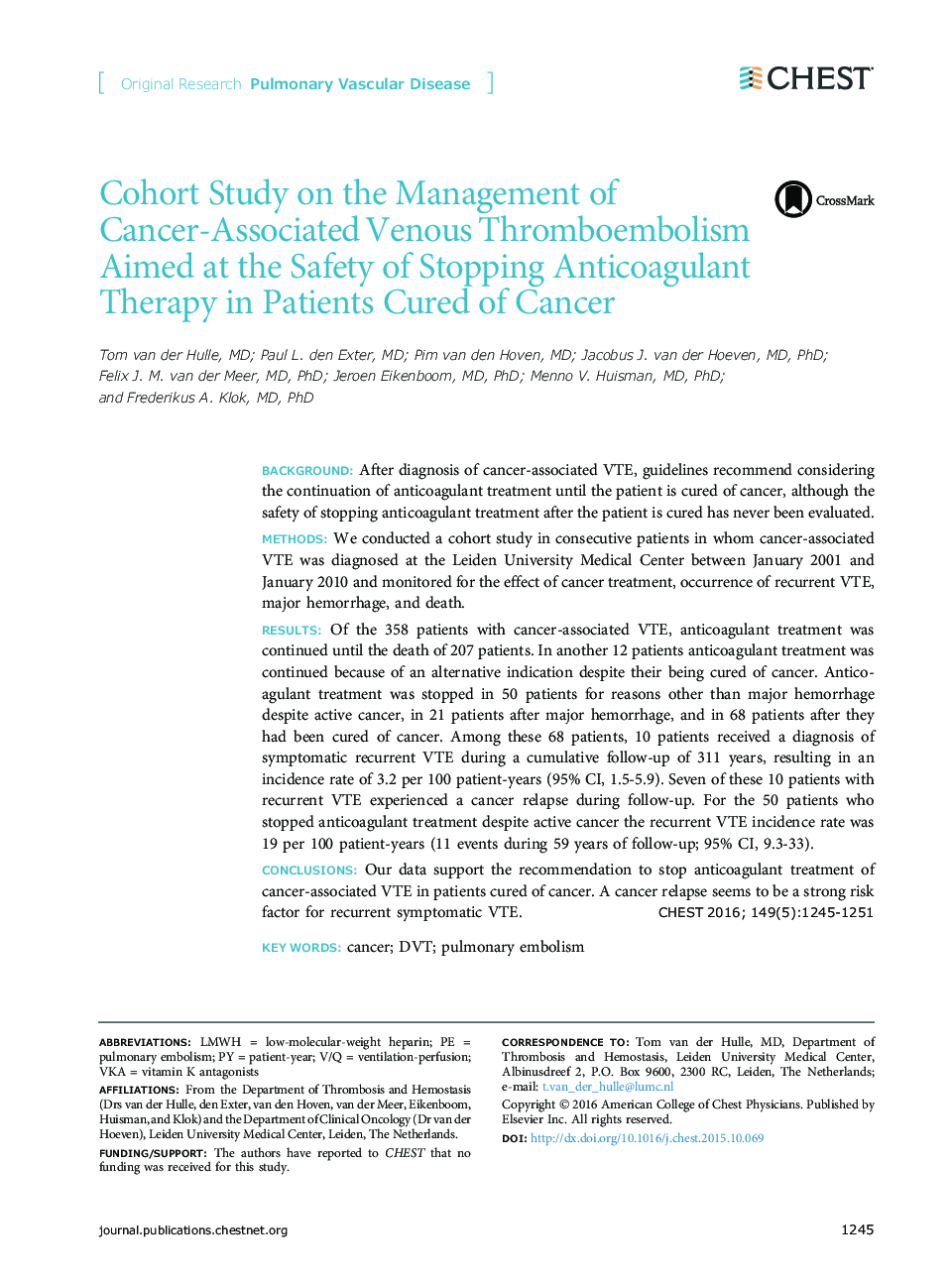| Article ID | Journal | Published Year | Pages | File Type |
|---|---|---|---|---|
| 2899713 | Chest | 2016 | 7 Pages |
BackgroundAfter diagnosis of cancer-associated VTE, guidelines recommend considering the continuation of anticoagulant treatment until the patient is cured of cancer, although the safety of stopping anticoagulant treatment after the patient is cured has never been evaluated.MethodsWe conducted a cohort study in consecutive patients in whom cancer-associated VTE was diagnosed at the Leiden University Medical Center between January 2001 and January 2010 and monitored for the effect of cancer treatment, occurrence of recurrent VTE, major hemorrhage, and death.ResultsOf the 358 patients with cancer-associated VTE, anticoagulant treatment was continued until the death of 207 patients. In another 12 patients anticoagulant treatment was continued because of an alternative indication despite their being cured of cancer. Anticoagulant treatment was stopped in 50 patients for reasons other than major hemorrhage despite active cancer, in 21 patients after major hemorrhage, and in 68 patients after they had been cured of cancer. Among these 68 patients, 10 patients received a diagnosis of symptomatic recurrent VTE during a cumulative follow-up of 311 years, resulting in an incidence rate of 3.2 per 100 patient-years (95% CI, 1.5-5.9). Seven of these 10 patients with recurrent VTE experienced a cancer relapse during follow-up. For the 50 patients who stopped anticoagulant treatment despite active cancer the recurrent VTE incidence rate was 19 per 100 patient-years (11 events during 59 years of follow-up; 95% CI, 9.3-33).ConclusionsOur data support the recommendation to stop anticoagulant treatment of cancer-associated VTE in patients cured of cancer. A cancer relapse seems to be a strong risk factor for recurrent symptomatic VTE.
